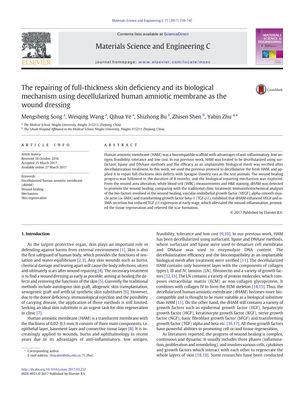The Repairing of Full-Thickness Skin Deficiency and Its Biological Mechanism Using Decellularized Human Amniotic Membrane as the Wound Dressing
March 2017
in “
Materials Science and Engineering: C
”

TLDR Human amniotic membrane helps heal skin wounds faster and with less scarring.
In the 2017 study, decellularized human amniotic membrane (dHAM) was evaluated as a wound dressing for full-thickness skin defects in Sprague-Dawley rats. The study demonstrated that dHAM significantly accelerated wound healing and reduced inflammation compared to control treatments. Wound areas decreased more rapidly, and white blood cell levels were lower in the dHAM group, indicating less inflammation. Histological analyses showed increased levels of vascular endothelial growth factor (VEGF) and alpha-smooth muscle actin (a-SMA) but decreased levels of transforming growth factor beta-1 (TGF-B1) in the early stages of healing, which contributed to less scar formation and enhanced tissue regeneration. The study concluded that dHAM is a promising biological dressing that positively influences the healing process by modulating key factors involved in wound healing and reducing inflammation, particularly in the early stages post-operation.


